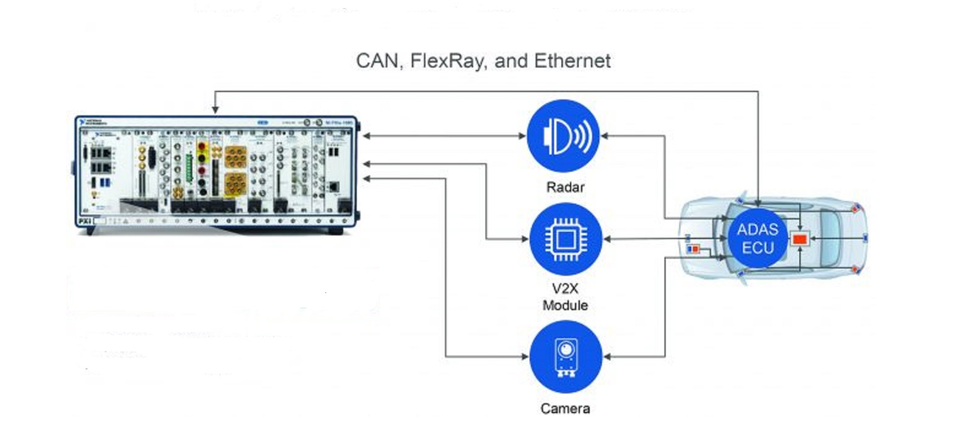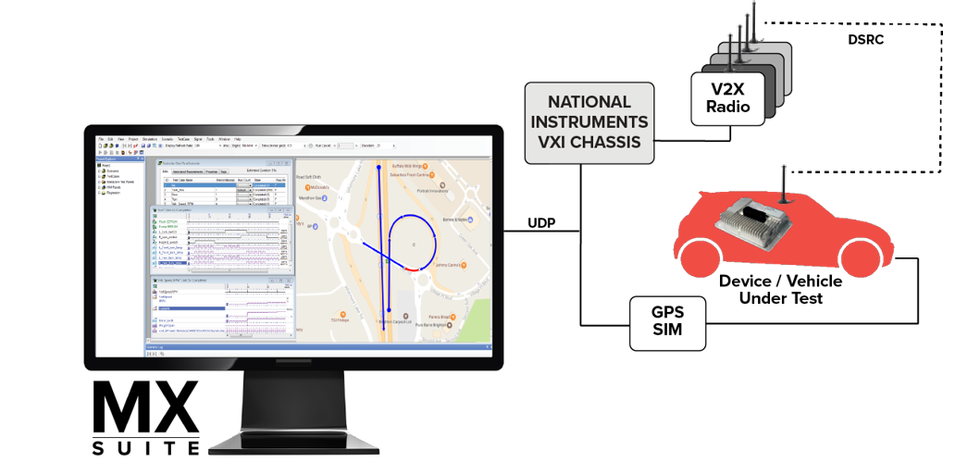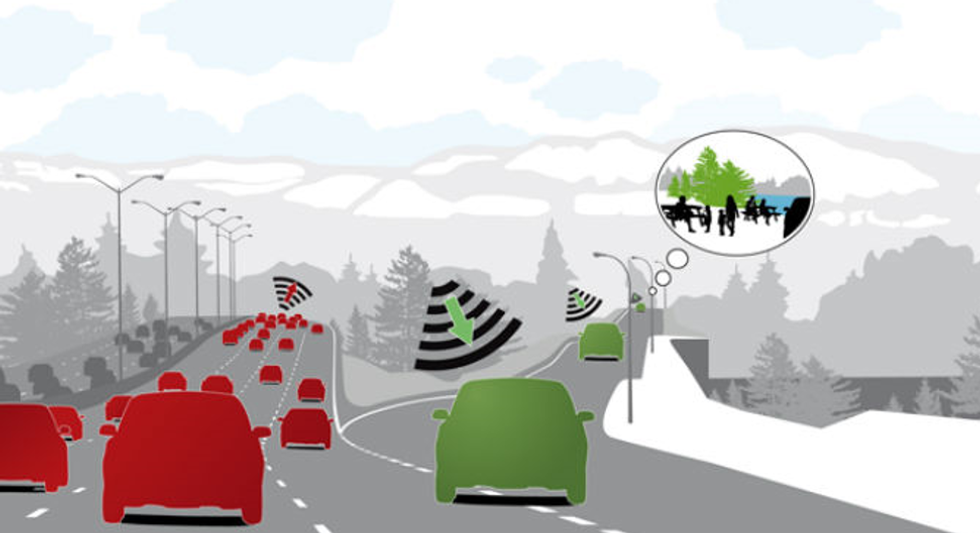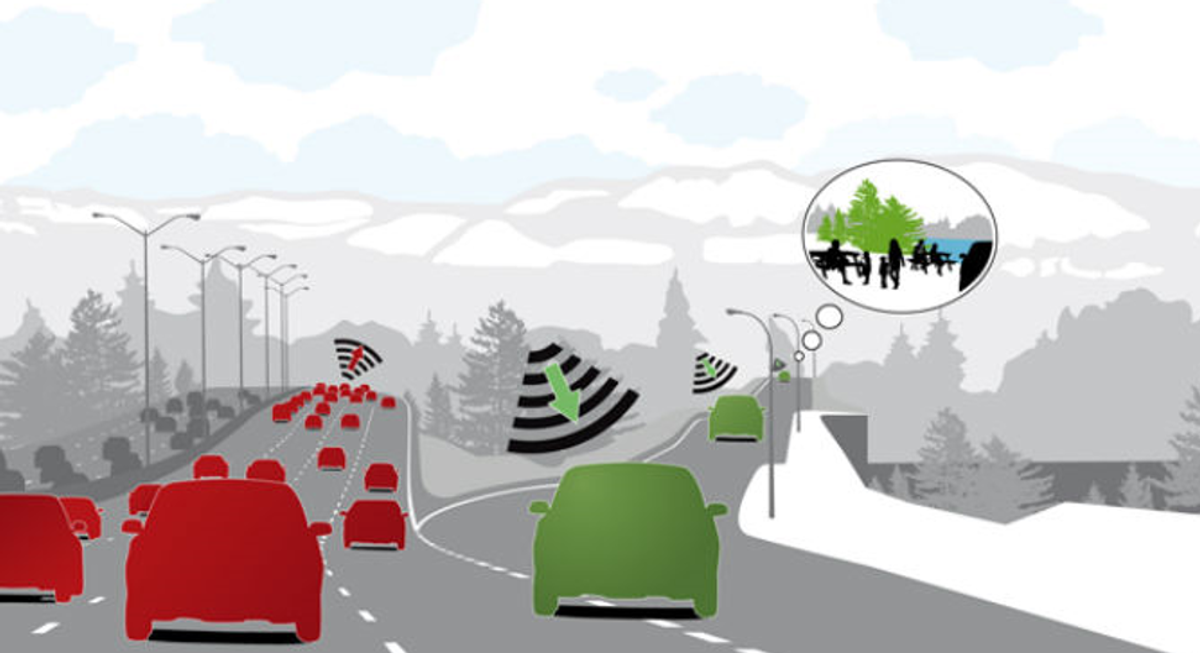Automotive OEMs and Tier-1 suppliers are now in the thick of the technology world’s two gigantic engineering challenges: connected cars and autonomous vehicles. That inevitably calls for more flexible development, test, validation, and verification programs that can quickly adapt to the changing technologies and standards.
For a start, the vehicle-to-everything (V2X) technology, which embodies the connected car movement, is also the point where the wireless industry most intersects with autonomous vehicles (AVs). Collision detection and avoidance is a classic example of this technology crossover between the AV and connected car technologies.
It shows how vehicles and infrastructure work in tandem for the creation of a smart motoring network. Here, at this technology crossroads, when V2X technology converges and collides with AV connectivity, reliability and low latency become requirements that are even more critical.
It is worth mentioning here that the demand for extreme reliability in stringent environments is already a precondition in automotive designs. When added to the connected car and self-driving vehicle design realms, well-tested connectivity becomes a major stepping stone.

The immensely complex hardware and software in a highly automated vehicle connected to the outside world also opens the door to malicious attacks from hackers and spoofs. And that calls for future-proof design solutions that demonstrate safeguards against hacking and spoofing attacks.
Not surprisingly, the convergence of connected cars and self-driving vehicles significantly expands development, test, validation and verification requirements. And that makes it imperative for engineers to employ highly-integrated development frameworks for multiple system components like RF quality and protocol conformance.
Modular Test Solutions
Take the example of a V2X system that requires certification for radio frequency identification tags and readers in electronic toll collection systems. Here, design engineers must also ensure that this connected car application protects data privacy and prevents unauthorized access.
However, being a new technology, this could entail a higher cost for validation at different development stages. The testing of communication equipment supporting different regional V2X standards could also lead to the purchase of measurement instruments for each standard and design layer.

That is why test and prototype solutions based on modular hardware and software building blocks can prove more efficient and cost-effective, as they can explore new technologies, standards and architectural options (see Figure 2). Software defined radio (SDR)-based test solutions, in particular, are flexible and cheaper in the long run.
The following sections will show how modular hardware and flexible software can help create RF calibration and validation solutions for autonomous and connected vehicles. It will explain how these highly customized systems can validate embedded wireless technology in V2X communications designed to save lives on the road.
URLLC Experimental Testbed
The immense amount of compute power involved in autonomous and connected car designs may lead to the expanded use of flexible SDR platforms for tackling the increasing complexity of embedded software and the rising number of usage scenarios, especially when automotive engineers must carefully balance extreme-reliability demands with low-latency requirements.
It is a vital design consideration amid the massive breadth of inputs and outputs for multiple RF streams serving a diverse array of cameras and sensors in autonomous vehicles. Moreover, SDR platforms can efficiently validate connected vehicles’ RF links to each other and to roadside units for information regarding traffic and construction work.
That is why the ultra-reliable low-latency communications mechanism is becoming so critical in both V2X systems and autonomous vehicles. It boosts system capacity and network coverage by reporting 99.999% reliability with a latency of 1 ms.
The URLLC reference design, for instance, enables engineers to create physical layer mechanisms for different driving environments and then compares them via simulation to analyze trade-offs between latency and reliability. So, a real-time experimental testbed like this one can substitute for expensive and cumbersome on-road testing to prove that the vehicle is safe for autonomous driving and V2X communications.

Shanghai University has joined with National Instruments to create a URLLC experimental testbed for advanced V2X services like vehicle platooning. The URLLC reference design and vehicle-to-vehicle communication are built around National Instruments’ SDR-based hardware for rapid prototyping of mobile communication channels.
Vector Signal Transceiver
Another design platform worth mentioning in the context of AV connectivity and connected car technology is Vector Signal Transceiver (VST). It is a customizable platform that combines an RF and baseband vector signal analyzer and generator with a user-programmablefield-programmable gate array (FPGA) and high-speed interfaces for real-time signal processing and control.
That enables comprehensive RF characteristic measurements and features like dynamic obstacle generation in a variety of road conditions. A VST system, for example, can simulate Doppler effect velocity from multiple angles or simulate scenarios such as a pedestrian walking across the street and a vehicle changing lanes.
It is another customized system that combines flexible, off-the-shelf hardware with a software development environment like LabVIEW to create user-defined prototyping and test solutions. That allows design engineers to transform VST into what they need it to be at the firmware level and address the most demanding development, test and validation challenges.
National Instruments introduced the first VST system in 2012 with an FPGA programmable with LabVIEW to accelerate design time and lower validation cost. Fast forward to 2019, the second-generation VST is ready to serve the autonomous and connected car designs where bandwidth and latency are crucial factors.
Automotive Testing’s Inflection Point
Industry observers call 2019 the year of V2X communications, while self-driving cars are still a work in progress. In the connected car realm, engineers are busy testing and validating the dedicated short-range communications-based vehicle-to-vehicle and vehicle-to-infrastructure devices to ensure that the V2X communication will work all the time and in all possible scenarios.
It is clear that both connected cars and self-driving vehicles share similar imperatives: they must be trustworthy and they must be credible. What is also evident by now is that these high-tech vehicles require high-tech prototyping and validation tools.
That marks an inflection point in automotive design and validation where two manifestations of smart mobility are striving to make traffic safer and more efficient. And the industry demands efficient and cost-effective test and verification solutions for these rapidly expanding automotive markets.
If these systems are based on modular hardware and flexible software, they can be efficiently customized for the autonomous and connected car designs. More importantly, these verification arrangements can significantly lower the design cost at different development stages.
For more on V2X testing, go to National Instruments.



